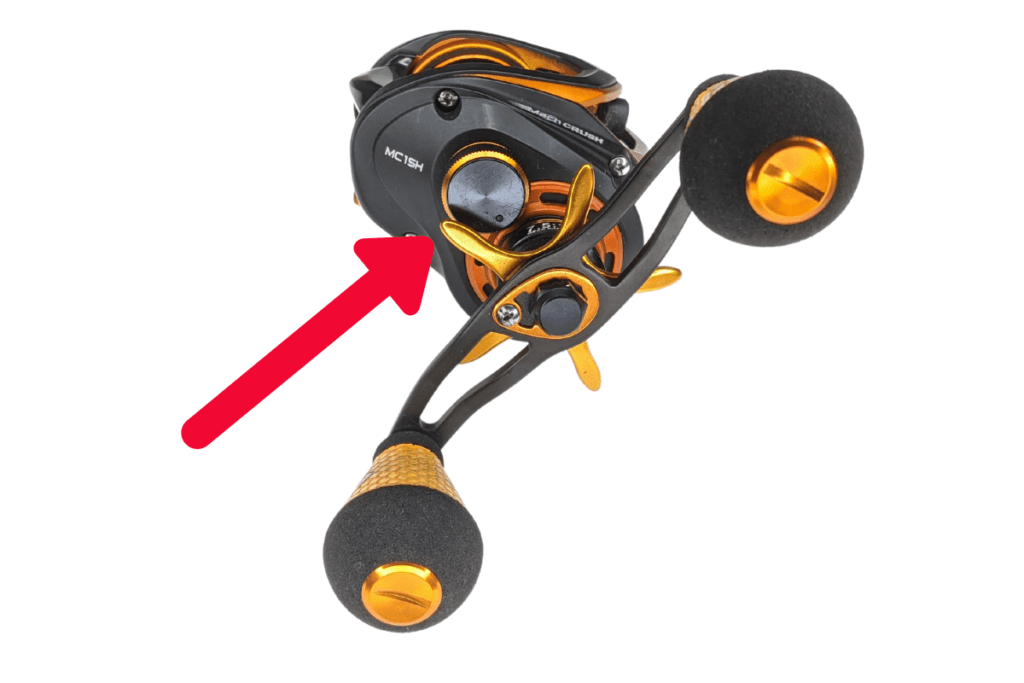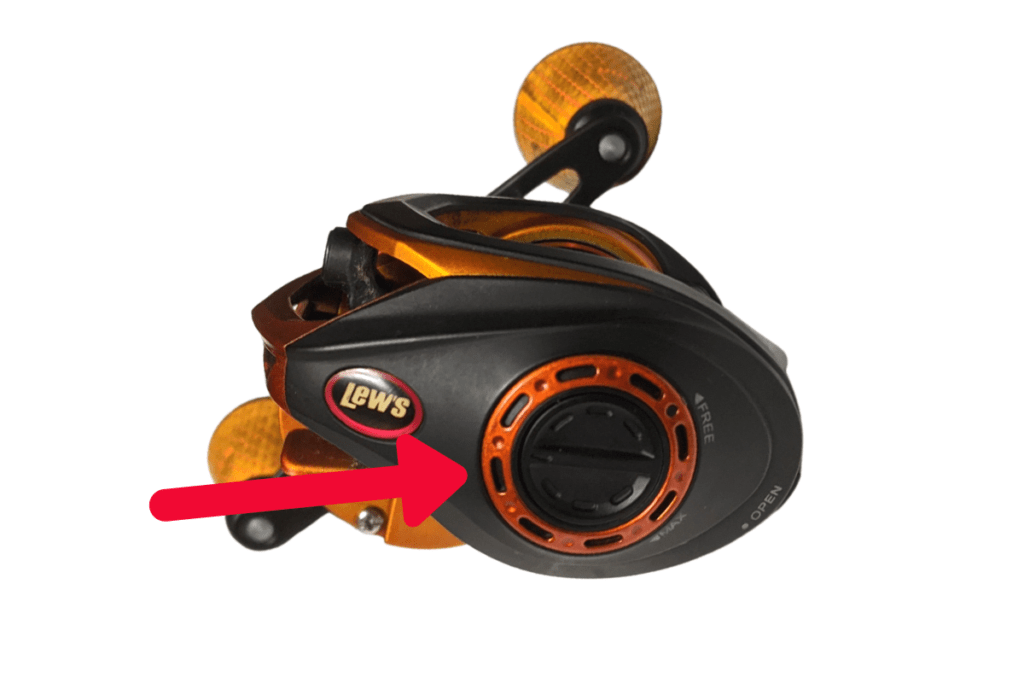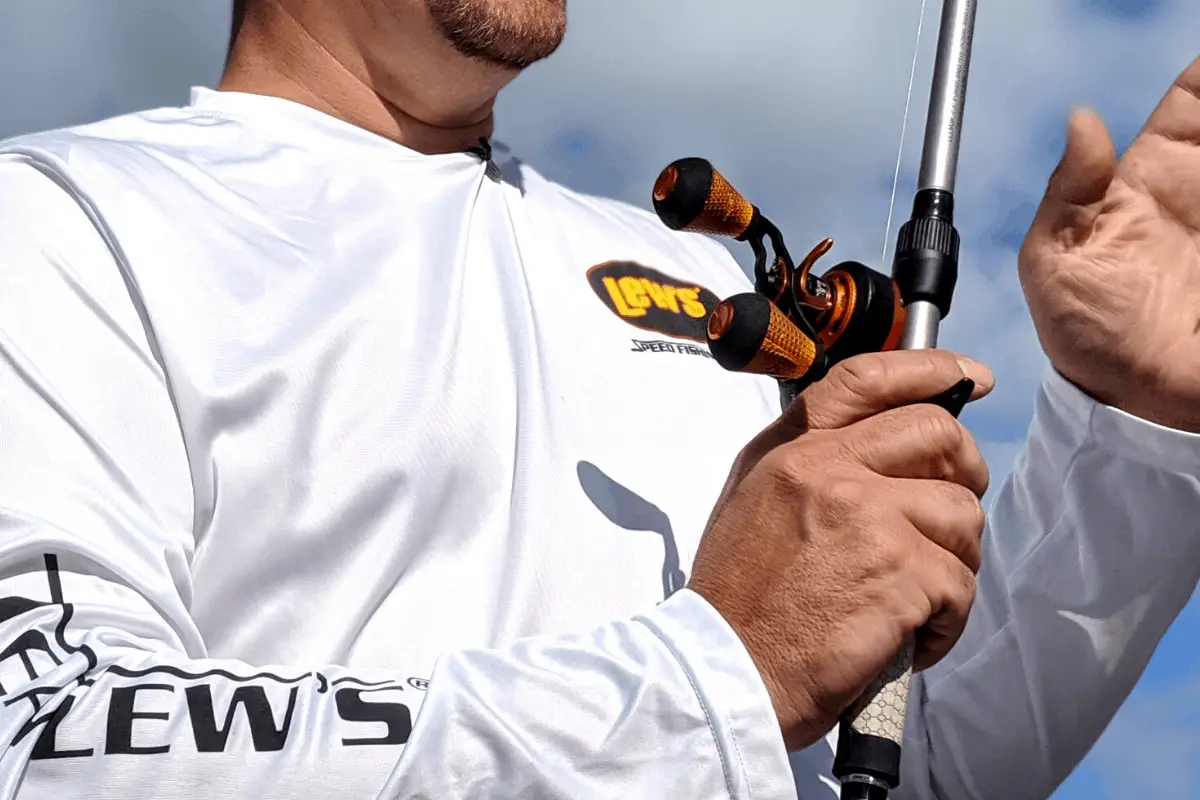Baitcast reels can be intimidating to use if you have never picked one up. Follow these easy steps to learn and master a baitcast reel and put that lure in places you never thought possible.
To set a baitcast reel properly, first tie on a lure. Then make sure the spool tension knob is loose and turn the brake off. Next, hit the thumb release button and let the lure fall while tightening the spool tension knob. Keep tightening until the lure drops slowly and evenly. Last, turn the brake to the half-way point. Make fine adjustments as needed.
In this article, I will break down, in detail, the easiest and best way that I know to set your baitcast reel to eliminate the dreaded backlash.
Why Use a Baitcast Reel?
I’ll admit it. It took me a long time to switch over to baitcast reels when I was younger. I would try, make a huge mess of the spool, and then give up.
It wasn’t until watching my brother drop a lure into places that I thought impossible, did I finally push through the frustration and force myself to learn how to fish one.
My bass fishing life has never been the same.
First, a baitcast reel allows for unprecedented accuracy. Whether roll casting, flipping, pitching, or traditional overhand casting, the reel design of a baitcaster allows the angler to control the release of the line which is virtually impossible with a spinning reel.
This added accuracy will increase the number of fish you catch exponentially.
A baitcast reel also offers anglers higher gear ratios and the ability to fish with heavier line without purchasing an oversized reel to do so.
What is a Backlash?
This is the single most frustrating part of learning how to use a baitcaster. This occurs when the spool holding the line is spinning faster than the line leaving the rod.
It is because of this mess that those who do try often give up. Nothing can end your fishing trip faster than a reel that is so knotted up it is impossible to get undone.
I promise, following these simple steps will ease the learning curve and get you on your way to becoming a baitcast master faster than you thought possible.
Key Components of the Reel
It is critical to understand the different components of the reel and how they work together to make casting easier.
The spool tension knob is a small dial most often positioned close to the button release and near the top of the reel. This knob controls how free the spool spins. The more experienced you become the more you can loosen this knob to the point of almost free-spooling for extreme casting distance.
The second component you will need to learn about is the braking system. This will be positioned on the opposite side of the handle and will usually have markings or directional arrows that say something like “more” and “less.”
Most modern baitcast reels can manipulate the brake from an external dial. In the past, many braking systems needed to be adjusted by removing a faceplate and changing the setting of the centrifugal brake from the inside. While this was not hard to do, it was cumbersome.

The Process to Setup a Baitcast Reel
The first step is to tie on the lure you want to use. Keep in mind, each time you change lures and the weight is different, you will need to go through this process again.
Once your lure is tied on, loosen the spool tension knob about as far as you can and then turn the brake system off.
Next, release the thumb bar to let the bait fall. Keep a thumb on the spool at first to keep it from spinning too quickly or you will get a backlash right away.
While the lure drops, tighten the spool tension knob. Keep tightening it until the lure falls on its own at a nice and steady pace. When the lure hits the water, it should stop moving and the spool should quit spinning.
Once you have the spool tension knob set turn the brake to the half-way point.
You may now make a cast.
Adjust the brake until you like the results. You should not need to maintain that much pressure with your thumb on the spool if the reel is set correctly.

Things to Keep in Mind
When you change lures, go through this process again.
If you get really excited and try to make a power cast odds are you are going to overpower your settings and the result will be a backlash. Also, be aware of the wind. Casting into the wind will slow your lure down faster than the spool. If you notice that you are going around a point and suddenly are hit with the wind in the face, tighten the brake up until you get used to the new conditions.
Final Thoughts
If you follow these steps, it won’t be long and you will be using a baitcast reel like a pro. A whole new world is going to open up and soon you will be placing lures exactly where you want them and catching more fish because of it.
As far as picking out a backlash, take your time and pull gently. Rarely do I need to cut line and re-spool. Just a word of caution though, braided line is more difficult to pick than monofilament. If you are just learning how to use a baitcaster, I would suggest starting with mono until you feel comfortable with the reel and casting process.
Be safe, tight lines, and don’t forget to encourage someone today, you never know how you might just change their life.
Isaiah 6:8

